| Vintage Pulp | Jul 20 2024 |


Imagine our surprise, then, when we read 1954's Last Seen Wearing and discovered that it's a stark police procedural allegedly inspired by the true 1946 disappearance of 18-year-old Bennington College student Paula Jean Welden. What Waugh produces is basically impossible to put down. If you like police procedurals, read this one. Waugh wows. Also wow is the cover art on the 1960 Great Pan edition. Uncredited though.
| Vintage Pulp | Dec 13 2023 |

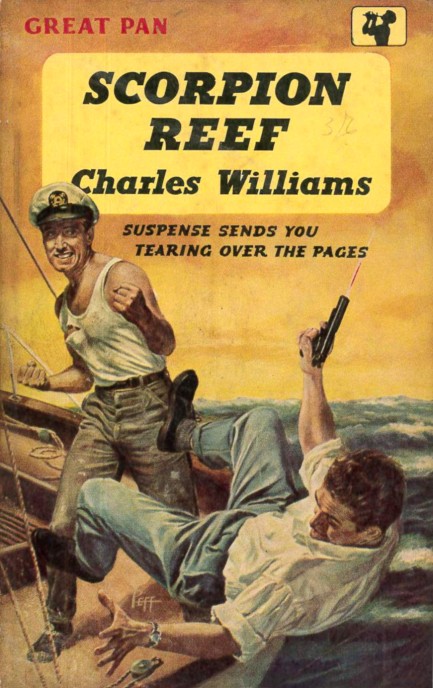
We mentioned that Charles Williams' 1955 novel Gulf Coast Girl was originally published as Scorpion Reef. Above is a look at the cover Great Pan produced for its 1958 edition. This was a typically excellent Williams effort, as we noted earlier.
| Vintage Pulp | Sep 17 2022 |

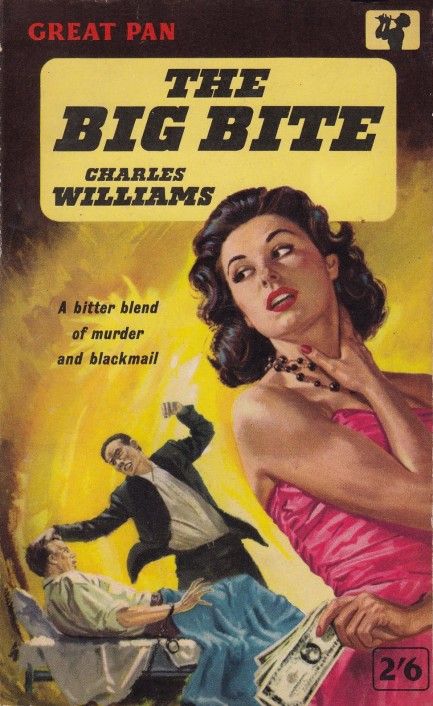
This is a fantastic piece of art for The Big Bite by Charles Williams. We'd be tempted to say frequent Pan Books illustrator Sam Peffer painted it, but he almost always signed his work in a place where it was not easily cropped or covered, the clever boy. Therefore we've seen only a few confirmed fronts by him where his signature was not present. Well, whoever was responsible for the art, we love this scene. You have a man recieving a severe beatdown as the femme fatale stands in the foreground barely interested. They do bore easily. In addition to the excellent art, this was an entertaining tale. We talked about it last year, and you can see what we thought at this link. It was originaly published in 1956, with this edition coming in 1960.
| Vintage Pulp | Sep 11 2022 |

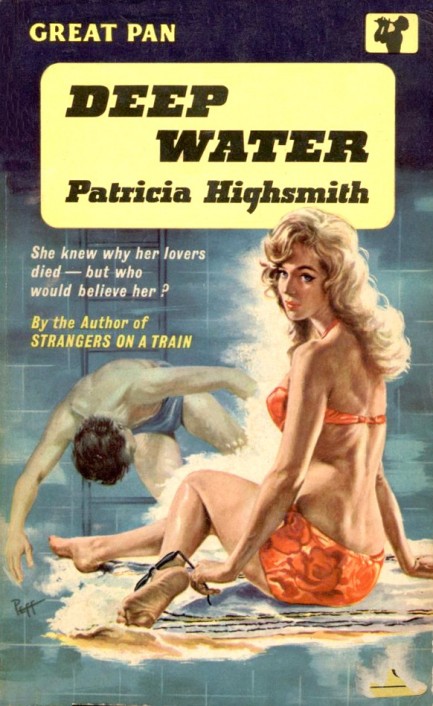
Patricia Highsmith was the high mistress of sociopathic characters, and Vic Van Allen, coming a couple of years after her famed psycho Tom Ripley, is an amazing creation. He's kind, urbane, low key, and horribly mistreated—all of which makes him a pressure cooker ready to explode. Deep Water is told entirely from his point of view, and its highly interiorized narrative makes you really feel for the guy—even after he starts killing people. The key to dragging forth the reader's sympathy is Highsmith's portrayal of Melinda, who tortures Vic day in and day out, destroying his peace of mind, his reputation, and his masculinity. This is a highly recommendable book, and if you can get the 1961 Pan edition you see here with Sam Peffer cover art, you'll be that much the happier for it.

| Vintage Pulp | Oct 15 2018 |

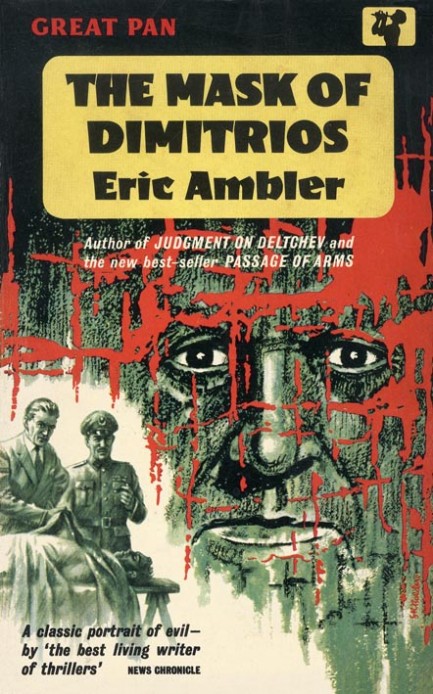
The investigation carries him from Istanbul to Sofia to Geneva and beyond. That sounds exotic, but the story is almost entirely driven by external and internal dialogues, with little effort spent bringing alive its far flung locales. While we see that as a missed opportunity, and the book could be shorter considering so much of the aforementioned dialogue fails to further illuminate matters, it's fascinating how Dimitrios is slowly pieced together. Here's a line to remember, as the main character Latimer reflects upon the modern age and what the world is becoming:
“The logic of Michelangelo's David and Beethoven's quartets and Einstein's physics had been replaced by that of The Stock Exchange Yearbook and Hitler's Mein Kampf.”
That isn't one you'd soon forget. Ambler sees casino capitalism and Nazism as twin signposts on a road to perdition built by people like Dimitrios. We can't even imagine that being written by a popular author today without controversy, but Ambler, writing in England during the late 1930s, had zero trouble identifying exactly what he was looking at. This Great Pan edition of The Mask of Dimitrios appeared many years later in 1961, and it has unusual but effective cover art from S. R. Boldero.
| Vintage Pulp | Sep 2 2017 |

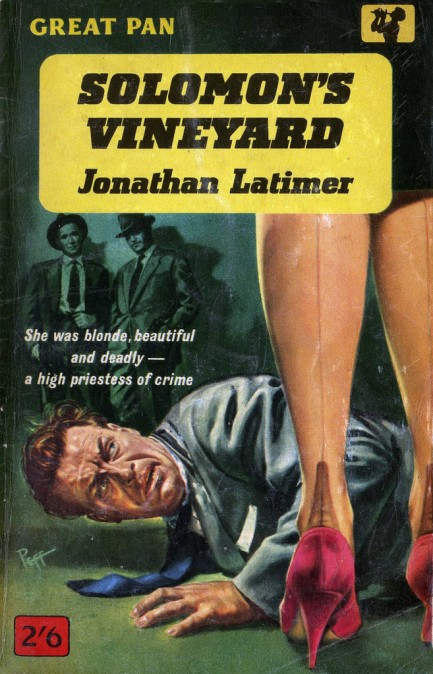
I grabbed her by the arms and shook her. Her false teeth fell out and rolled across the carpet. [snip] I started into the parlour, but a thin man in shirtsleeves was in the way. I hit him and he went down. In the parlour the blonde who'd slugged me with the lamp began to scream. She thought I was coming for her. I went to the big radio in the corner. I picked it up, tearing out the plug, and tossed it across the room. It shattered against
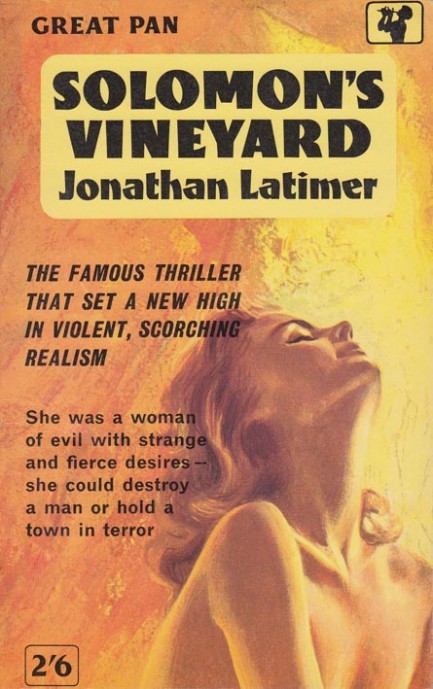 the wall. I kicked over a table with two lamps on it. I tore some of the fabric off a davenport. I threw a chair at a big oil painting over the fireplace. I took a metal stand lamp and bent it up like a pretzel. I pulled up the oriental rug and ripped it down the middle.
the wall. I kicked over a table with two lamps on it. I tore some of the fabric off a davenport. I threw a chair at a big oil painting over the fireplace. I took a metal stand lamp and bent it up like a pretzel. I pulled up the oriental rug and ripped it down the middle.That's going berserk like you mean it. We won't bother with a long plot summary since you can find those all over the internet, but basically the protagonist is hired to spring a woman from a cult and finds himself neck deep in corpse worship, hidden treasure, police corruption, and sado-masochism. The book is reasonably well written, very hard boiled, and built around a set of unlikely characters—including a femme fatale known by all as “The Princess.” Great Pan published it in 1961, and it had an alternate cover which you also see here. It was re-issued several times after its debut—including by Popular Library as The Fifth Grave—which means it isn't hard to find. We recommend you give it a read.




































































